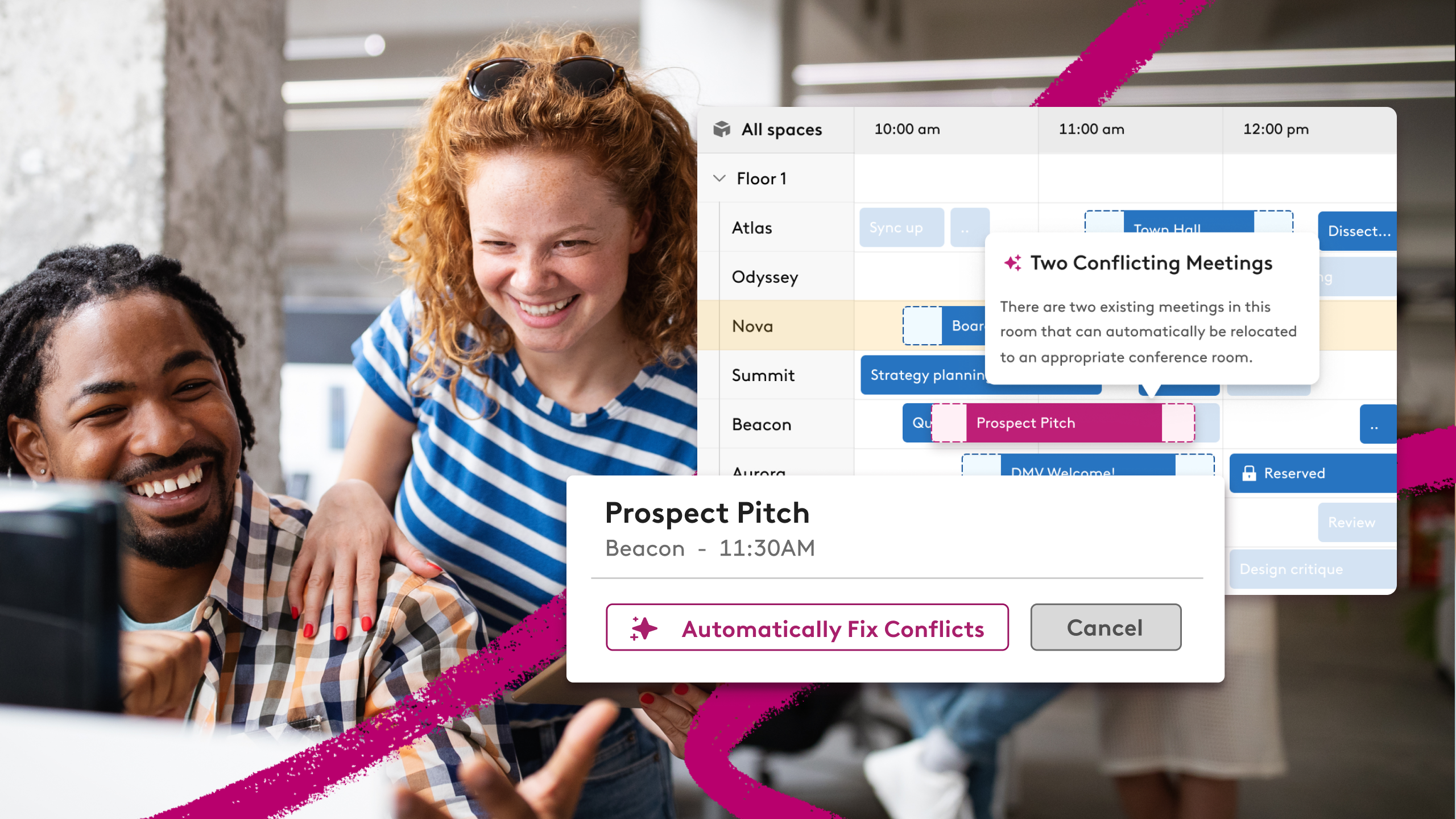How Modern Teams Design Offices for Demand with Data

Hybrid work has introduced an uncomfortable reality for workplace teams: there’s no playbook. Every organization is navigating new questions about space, demand, and what employees actually need to do their jobs.
But one thing is consistent across the board, without reliable data, even the best-laid plans fall apart.
In a recent conversation hosted by Robin, workplace leaders from VergeSense, Kabam, and TraceLink shared how they’re using data not just to measure success, but to build offices that finally feel fit for purpose.
Here are some of the smartest ways they’re doing it.

Solving the Peak-Day Dilemma
For many companies, Tuesdays and Wednesdays have become the new Mondays. Think: a surge of people showing up, overwhelming conference rooms and desks.
Kanav Dhir, VP of Product and Marketing at VergeSense, calls this the “Gaussian bell curve problem.” You can plan for the average, or you can plan for the peaks but rarely both without trade-offs.
“At some point, you hit what we call a breakpoint. That’s the moment when you technically still have capacity, but the employee experience starts to decline.” - Kanav Dhir, VergeSense
VergeSense helps companies model this breakpoint with sensor data. Instead of relying on gut feel, workplace teams can see exactly when shortages of desks, phone booths, or meeting rooms occur and decide whether that trade-off is acceptable.
It’s a shift from binary thinking (“do we have enough space?”) to nuanced planning (“when does too much demand start to feel like chaos?”).
Real-time Visibility Beats Lagging Reports
Brenton Kelly, Workplace Experience Manager at Kabam, is clear-eyed about the limits of static reports.
"When we can tie badge data in with Robin’s real-time analytics, managers have visibility the moment something’s off. When there's a problem in the office, waiting a month to identify it is just too long." - Brenton Kelly, Kabam
That immediacy matters. If you discover a team isn’t coming in often enough, or one area of the office is consistently underutilized, you can adjust policies, reassign space, or intervene before habits solidify.
Kabam is now working to integrate real-time occupancy analytics into their workflow so leaders don’t have to guess whether their hybrid strategy is working.
Designing for Purpose, Not Just Presence
Too many workplaces treat all square footage the same. But the best teams understand not every desk, or every day, is created equal.
Robin’s own example illustrates this perfectly. Early on, we noticed that their office felt empty even when attendance looked healthy on paper. Digging into VergeSense data revealed why: while all the desks were full, employees were spending less than 40% of their day sitting there. The rest of the time was spent moving between meetings, phone booths, and soft seating areas.

That insight sparked a deliberate choice: reduce assigned desks and expand collaborative zones. Rather than a static floor plan, the space flexes to match how people actually work.
It’s a model that Kabam and TraceLink have also embraced, tailoring their offices around specific roles. For example, Kabam’s design teams rely on expansive writable surfaces and technology-equipped collaboration spaces, resources they don’t have at home.
The Role of Passive vs Active Data
One challenge all the panelists agreed on is employee sentiment around being “tracked.” Some organizations tried mandatory desk check-ins or QR codes and saw pushback almost immediately.
Instead, they’ve pivoted to passive data collection: badges, sensors, and anonymized usage insights.
“We always get some level of pushback,” Kanav said. “But transparency helps. When employees can see what data is collected and how it’s used, there’s less friction.”
This balance is critical. If employees feel watched, trust erodes. But without any data, workplace teams are forced to make decisions in the dark.
Rethinking the Right Metrics
What metrics actually matter when you’re trying to build a better office? The panel shared a few standouts:
- Occupancy trend lines: Weekly or real-time usage to spot gaps or crowding
- Shortage rates: How often employees run out of meeting space or phone booths
- Purpose alignment: Whether each area of the office matches its intended use
- Breakpoints: The threshold where demand tips from vibrant to overwhelming
The takeaway: Raw attendance numbers are just the starting point. The real value comes from connecting data to employee experience to fuel continuous improvement.
The Bottom Line
Workplace management isn’t about guessing how people should work. It’s about studying how they actually do and designing spaces that meet them there.
Whether you’re reconfiguring your office, updating your hybrid policy, or just trying to reduce friction, the best place to start isn’t with assumptions. It’s with data. Because the only thing worse than an empty office is one that’s full . . . and still doesn’t feel right.
Curious how to bring clarity to your own space planning? Explore Robin’s platform and learn how leading teams are using real-time insights to build offices that work for everyone.













